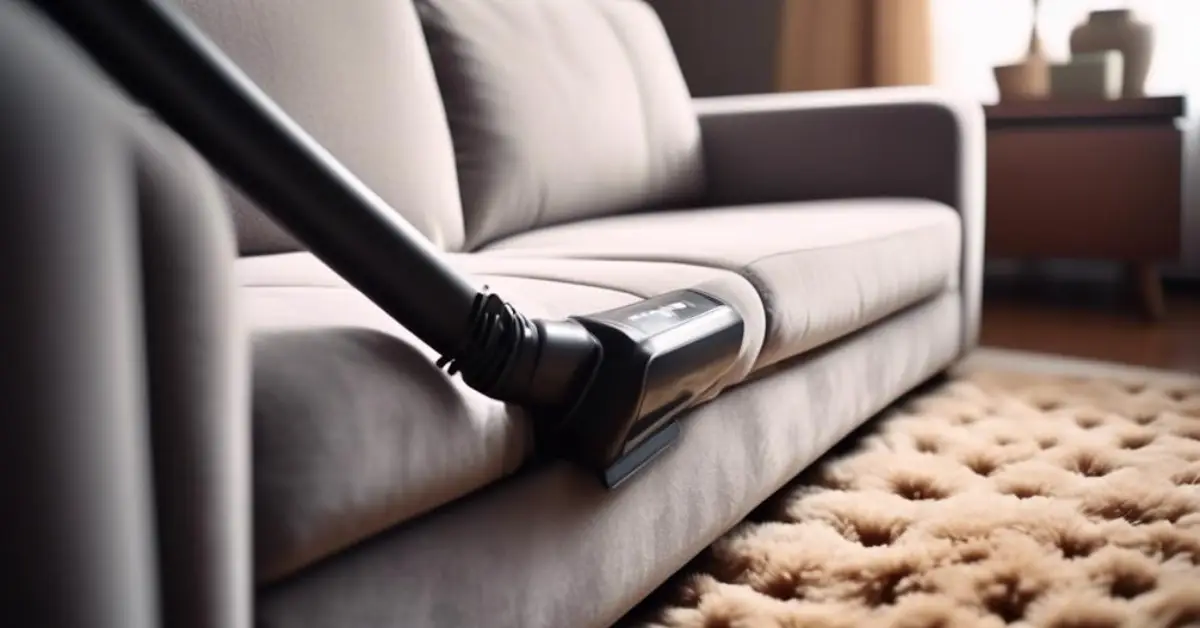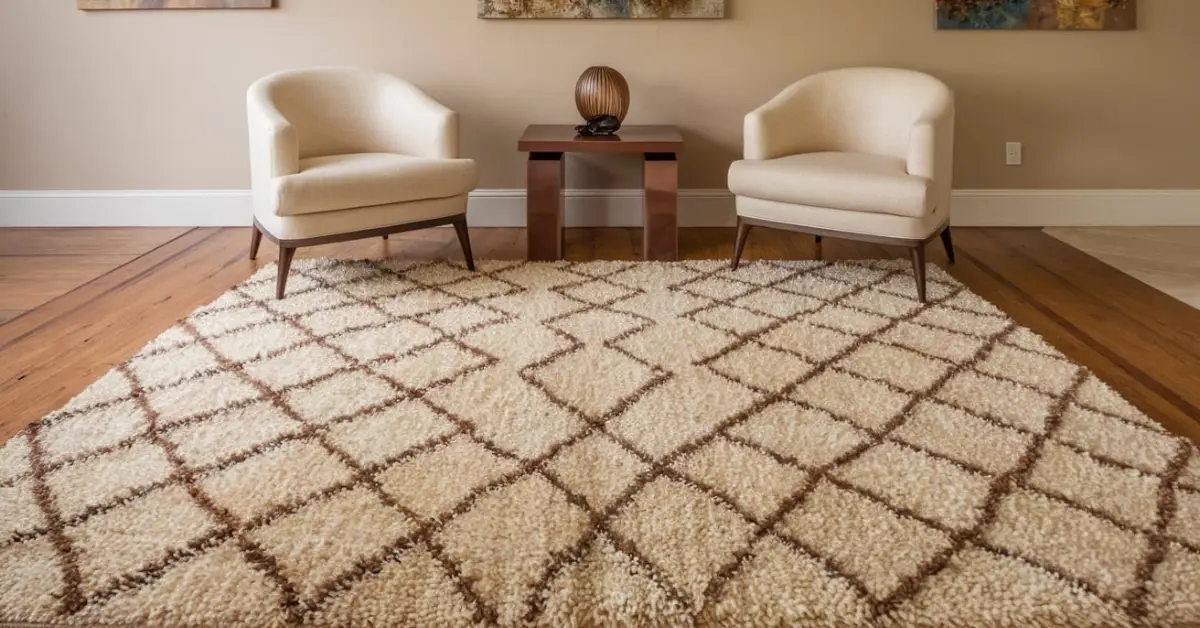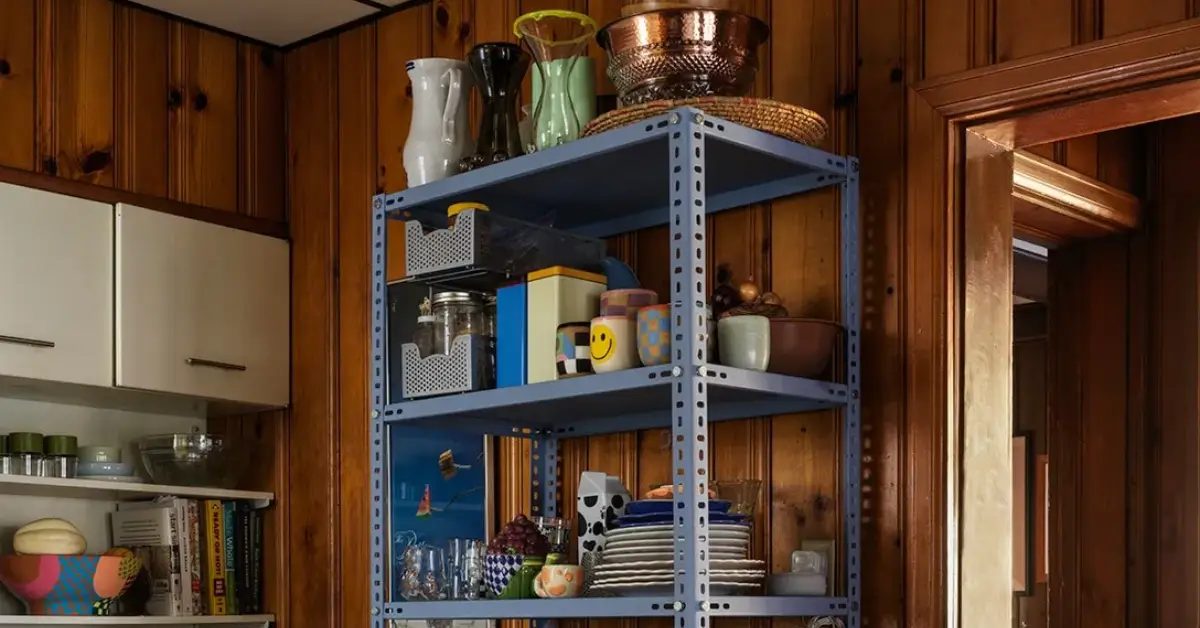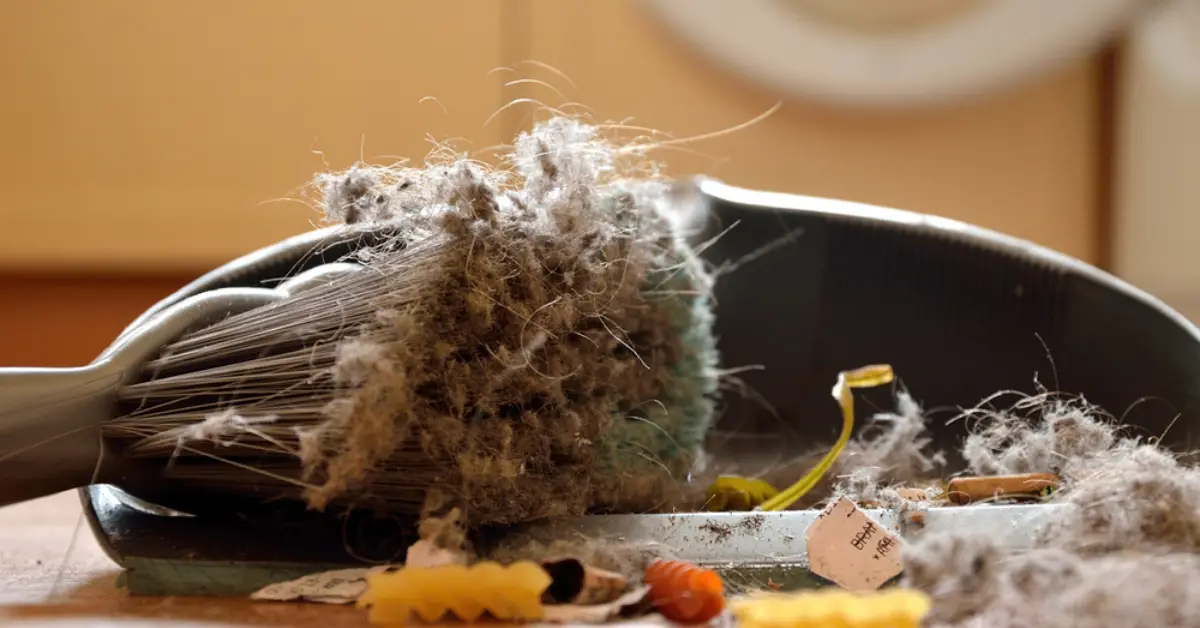8 Worst Allergy Traps in Your Home (And How to Eliminate Them)
Last spring, I couldn’t figure out why my allergies were worse inside my own house than outdoors. I had cleaned every corner, vacuumed daily, even swapped out scented candles for air purifiers. Still, my nose ran, my eyes burned, and I woke up congested every morning. It wasn’t until I moved my couch for a deep clean that I saw it — a thick layer of dust and pet dander hiding where the vacuum never reached. That’s when it hit me: my biggest allergy triggers weren’t out in the open at all. They were hiding right under my nose.
If you’ve ever felt the same — sneezing even in a spotless home — you’re not imagining it. Most people focus on visible dust or pet hair but overlook the quiet zones where allergens thrive: beneath furniture, inside fabrics, around vents, or under the bathroom sink. Those hidden spots can turn your “clean” home into a constant allergy trap.
In this guide, I’ll show you the eight most common places allergens love to hide — and how you can fix each one without turning your life upside down. These aren’t abstract health tips; they’re small, real changes that actually make a difference. Because when you know where the problem lives, you can finally breathe easier — literally.
So before you reach for another antihistamine, let’s uncover what’s really going on inside your home. Which of these hidden spots do you think might be your biggest culprit?
Understanding The Hidden Allergen Problem
Why “Hidden” Allergens Matter (And How They Differ From Obvious Ones)
Most people think of allergens as things you can see or smell — dust floating in sunlight, pet hair on the couch, or pollen drifting through the window. But the real troublemakers are usually the ones you don’t see. Hidden allergens are microscopic and thrive in the quiet corners of your home — behind furniture, inside fabrics, and deep in soft materials that rarely get cleaned.
What makes them different is that they stay put until you disturb them. The moment you plop down on the sofa, shake a curtain, or move a chair, those particles release into the air, and your body reacts instantly. It’s not about how tidy your house looks; it’s about what’s lurking where your cleaning tools never reach.
Common Indoor Allergens You Might Not Think About
Here’s the truth: almost every home, no matter how clean, carries a mix of hidden allergens. According to the Asthma & Allergy Foundation of America, eight out of ten people in the U.S. are exposed to dust mites, and six out of ten are exposed to pet dander. That’s most of us — even if we don’t have pets.
Some of the most common hidden allergens include:
- Dust Mites – Microscopic creatures that live in bedding, furniture, and carpets.
- Pet Dander – Tiny skin flakes that cling to fabrics, walls, and vents.
- Mold Spores – Often invisible but thrive in damp, dark places.
- Cockroach Allergens – Present even in spotless homes, hiding behind appliances or inside cabinets.
- Pollen – Tracked in from shoes, pets, and open windows, settling deep in fabrics.
Once these allergens build up, even the best vacuuming won’t help much unless you know where they hide and how to target them properly.
If you’re searching for “hidden places allergens hide in your house,” you’re probably tired of generic advice that doesn’t work. You already clean, vacuum, and change filters — yet the sneezing never stops. What you really want is a find-and-fix plan that actually tackles the problem areas most people ignore.
That’s exactly what this guide is built for. I’ll walk you through eight overlooked spots in your home, explain why they’re allergy traps, and show you simple ways to fix them. The goal isn’t to make you scrub harder — it’s to help you clean smarter so you can finally breathe easier.
Spot 1 – Under & Behind Furniture (Couches, Beds, Large Pieces)

Why This Spot Harbors Allergens
You’d be surprised how much your furniture hides from you. The space under and behind big pieces — like couches, beds, or bookshelves — acts like a magnet for dust, pet hair, and debris. Every time you walk by, sit down, or open a window, those trapped particles get stirred up and float right back into the air you breathe.
Most cleaning routines stop at “visible surfaces.” But allergens love the dark, undisturbed zones where vacuums and mops never reach. Over time, these pockets become mini dust reservoirs that constantly feed your allergy symptoms. If you’re wondering why dust keeps returning no matter how much you clean, you’ll find some helpful insights in our guide on why your house collects so much dust and how to prevent it.
How To Identify The Issue
A quick check can tell you if your furniture is secretly working against you:
- Slide your couch or bed a few inches from the wall — if you see a gray line of dust or hair, that’s your culprit.
- Shine a flashlight under the bed or behind large dressers — you’ll spot cobwebs, lint, and even pet dander buildup.
- Notice if your allergies flare up right after you rearrange furniture or clean — that’s a sign allergens were disturbed.
If you’ve never cleaned behind certain pieces in months (or years), chances are those areas are loaded.
Fix It: Practical Steps
This isn’t about spending hours deep-cleaning — it’s about focusing where it counts. Here’s what works:
- Move Large Furniture a few inches from walls so air can circulate and dust doesn’t settle as easily.
- Vacuum Under And Behind couches, beds, and cabinets weekly using a HEPA-filter vacuum, which traps microscopic allergens instead of pushing them back into the air.
- Use Attachments to reach under heavy pieces rather than dragging them around every time.
- Wipe Hard Surfaces (like bed frames or baseboards) with a damp microfiber cloth — dry dusting just stirs allergens up.
- Choose Low-Maintenance Materials where possible — leather, wood, or metal are easier to clean and don’t trap allergens the way heavy upholstery does.
The Mayo Clinic also recommends replacing heavily upholstered furniture with easy-to-clean alternatives if you have chronic indoor allergies.
Spot 2 – Bedding, Mattresses & Pillows
Why Allergens Hide Here
If there’s one place in your home that should feel like a refuge, it’s your bed — but for many people, it’s actually ground zero for hidden allergens. Mattresses, pillows, and bedding quietly collect dust mites, dead skin cells, and pet dander. Since you spend nearly one-third of your life sleeping, exposure here adds up fast. You might also be surprised by other everyday household items that may be triggering your allergies without you realizing it.
Even in clean homes, these particles embed deep within the fabric layers, where regular washing doesn’t always reach. The constant body heat and humidity create the perfect breeding conditions for microscopic mites that trigger allergies and asthma.
Quick Signs You Might Have An Issue
You don’t need a lab test to confirm something’s wrong. Watch for these telltale signs:
- Morning congestion or sneezing right after waking up.
- Heavy pillows or bedding that feel damp or musty.
- Visible dust when shaking out sheets or fluffing pillows.
- Better sleep elsewhere (like a hotel bed) — a strong sign your mattress is the culprit.
Fix It: Targeted Solutions
Most people know they should wash their sheets, but few take steps that actually remove hidden allergens. Start here:
- Use Allergen-Proof Covers: Zippered encasements for your mattress, pillows, and box spring prevent mites and dander from escaping.
- Wash Bedding Weekly In Hot Water: Use water that’s at least 130°F (54°C) to kill dust mites effectively.
- Replace Old Pillows: Swap them out every 12–18 months, or sooner if they can’t be washed.
- Air Out The Mattress: Strip bedding once a week and let it breathe in sunlight if possible.
- Keep Pets Off The Bed: Their dander builds up fast in fabrics and seams.
Consistent maintenance makes a noticeable difference in allergy relief — you’ll likely breathe easier and wake up clearer.
Spot 3 – Carpets, Rugs & Floor Coverings

Why This Spot Is Problematic
Carpets add warmth, but they also trap allergens like dust, pet dander, and mold spores deep in the fibers. Every step releases those particles back into the air. Wall-to-wall carpeting is especially problematic because it holds allergens even after regular cleaning.
That means no matter how often you vacuum, if you’ve got high-pile or older carpets, allergens are silently building up beneath your feet.
How To Assess Your Flooring Situation
A quick floor check can reveal how serious the problem is:
- Rub your hand or foot across high-traffic areas — if you see dust, you’ve found the hotspot.
- Inspect corners and edges: These trap dust where vacuums rarely reach.
- Notice odors: Musty or stale smells can indicate trapped moisture or mold.
- Check the pile: High-pile carpets hold more debris than low-pile or flat rugs.
Fix It: Flooring And Maintenance Tips
You don’t have to overhaul your flooring overnight — just adjust how you maintain it:
- Replace High-Pile Carpets: Go for hard flooring like vinyl, hardwood, or linoleum in allergy-prone rooms.
- Vacuum Weekly With A HEPA Filter: Regular vacuums can blow allergens back into the air.
- Use Washable Rugs: Choose ones you can toss in the washer every few weeks.
- Deep-Clean Carpets Every Few Months: Steam cleaning lifts embedded particles.
- Avoid Storing Items On The Floor: Boxes and fabrics trap dust under them.
These updates pay off long-term — fewer allergens, cleaner air, and far less sneezing.
Spot 4 – Curtains, Blinds, Window Sills & Frames
Why This Spot Harbors Allergens
Windows bring in fresh air — and allergens. Curtains, blinds, and sills quietly collect dust, pollen, and moisture, especially if you open windows often.
Over time, they become prime zones for mold and pollen buildup.
How To Spot Trouble
You might have a hidden problem if you notice:
- Dust buildup on blinds or curtain folds.
- Condensation or black spots (mold) on window edges.
- Musty fabric smell when sunlight hits your drapes.
- Irritation or sneezing when adjusting curtains.
Fix It: Cleaning & Material Choices
These changes keep your windows allergen-free:
- Switch To Washable Curtains: Replace heavy drapes with lighter, machine-washable fabrics.
- Clean Blinds Weekly: Use a damp cloth — dry dusting only stirs allergens.
- Seal Window Frames: Prevent leaks and moisture buildup.
- Control Humidity: Use dehumidifiers near windows prone to condensation.
- Opt For Shades: They trap less dust than thick fabric curtains.
Regular upkeep here has an immediate payoff — clearer air and fewer triggers near your main light sources.
Spot 5 – Kitchen & Pantry (Cabinet Interiors, Food Packaging, Appliance Interiors)

Why Allergens Hide Here
Your kitchen might look spotless, but allergens thrive in the tight spaces you never see. Mold spores grow under sinks, behind refrigerators, or inside damp cabinets. Food crumbs invite cockroaches — one of the most common household allergen sources. Even unsealed containers can spread particles into the air.
What To Check
A quick inspection can reveal a lot:
- Crumbs or residue under appliances or in corners.
- Moisture buildup near the sink or behind the fridge.
- Unsealed or open food containers.
- Poor ventilation: If cooking steam lingers, allergens do too.
- Dusty shelves or pantry walls.
Fix It: Prevention & Maintenance
You can allergy-proof your kitchen without overhauling it:
- Use Airtight Containers: Keeps food fresh and deters pests.
- Clean Under Appliances Monthly: Wipe away crumbs and check for leaks.
- Run Exhaust Fans: Reduce humidity while cooking.
- Toss Old Food Regularly: Prevents mold and cockroach buildup.
- Check Hidden Areas: Inspect behind the stove, fridge, and under the sink for damp spots.
A clean kitchen doesn’t just look better — it actively keeps allergens under control and your indoor air safer to breathe.
Spot 6 – Bathroom & Damp Areas (Showers, Bathmats, Behind Toilet, Storage Cabinets)
Why This Spot Is Critical
Your bathroom might look spotless, but it’s a perfect breeding ground for mold and mildew — two of the most common indoor allergens. The constant moisture, steam, and warmth make it easy for mold spores to multiply unnoticed, especially in corners or under cabinets.
When you let moisture linger, those tiny spores spread through the air and trigger allergies, congestion, or even asthma flare-ups. The danger isn’t just what you see — it’s what’s quietly growing behind or under surfaces. For more on identifying moisture-related issues, check out our detailed guide on common causes of musty home odors and simple ways to eliminate them.
Hidden Signs Of Trouble
Most people clean what’s visible, but allergens love the hidden, damp zones. Watch for these:
- Dark grout lines or discoloration around tiles or shower edges.
- Musty smell from your bathmat or shower curtain.
- Condensation or water droplets on walls or ceiling after showers.
- Soft spots or warping under the sink or behind the toilet — a sign of hidden leaks.
- Cabinet bases or corners with dark patches — early mold growth.
If any of these sound familiar, it’s time to tackle the moisture before it spreads.
Fix It: Moisture Control & Cleaning Regime
You don’t need industrial cleaners — just a consistent routine that keeps moisture down and airflow up:
- Run The Exhaust Fan during and for 15–20 minutes after showers.
- Keep Humidity Below 50% with a dehumidifier or good ventilation.
- Remove Carpeting from the bathroom — it traps moisture and mold.
- Use Washable Bathmats And Curtains — clean them weekly.
- Scrub Grout Weekly with a mild cleaner or baking soda paste.
- Repair Leaks Promptly — even tiny drips can cause major mold growth.
This kind of proactive care keeps your bathroom fresh, dry, and allergen-free — not just clean on the surface.
Spot 7 – Entryway & Shoes/Coats Zone

Why Allergens Are Tracked In
Every time you walk into your home, you bring the outside world with you — pollen, mold spores, dust, and even pet dander cling to shoes and coats. This is one of the biggest yet most overlooked sources of allergens indoors. A no-shoes policy is one of the simplest ways to cut indoor dust and allergen transfer dramatically.
The entryway is your home’s first defense line — if it’s cluttered or dusty, allergens spread to every room.
How To Audit Your Entryway
A quick check can show how much you’re unknowingly tracking inside:
- Worn or dirty doormat that never gets washed.
- Shoes scattered near the door instead of stored properly.
- Coats or bags piled on the floor, collecting outdoor dust.
- Visible dirt lines near thresholds or baseboards.
If your entry feels dusty or you sneeze right after coming home, that’s a clue your “welcome zone” needs attention.
Fix It: Behavior + Setup
With a few habit changes, you can stop allergens at the door:
- Adopt A No-Shoes Policy: Keep indoor slippers or socks for comfort.
- Set Up Dedicated Shoe Storage: A small rack or bin keeps things neat and contained.
- Use Washable Mats: Clean them weekly to trap and remove debris.
- Wipe Down Coats And Bags: Especially after outdoor activities or pollen-heavy days.
- Vacuum The Entryway Often: Dust builds up fast in these high-traffic spots.
This is a small shift that delivers big results — it keeps the rest of your home cleaner and your air clearer.
Spot 8 – HVAC, Filters, Ductwork & Hidden Storage Areas
Why This Zone Matters
Even if your home looks spotless, your air system might be quietly circulating allergens. Dust, dander, and mold can settle inside ducts, vents, or old filters — only to get blown back into your living space when the system runs.
Likewise, storage zones — attics, basements, or closets filled with boxes and old fabrics — collect dust over time, turning into allergen reservoirs.
What To Inspect
You can’t fix what you don’t see, so check these areas regularly:
- Furnace or AC filters — dirty or overdue for replacement.
- Vent covers and duct registers with visible dust.
- Hidden storage areas like attic corners or basement shelves.
- Boxes of old clothes, linens, or papers that gather dust.
- Drop ceilings or vents near bathrooms where moisture collects.
Fix It: Inspection & Upgrade Plan
A little maintenance can dramatically improve indoor air quality:
- Replace Filters Every 1–3 Months or more often if you have pets or allergies.
- Use HEPA Or Allergy-Friendly Filters: They trap finer particles than standard ones.
- Schedule Duct Cleaning every year or two if buildup is visible.
- Wipe Down Vent Covers monthly to stop dust recirculation.
- Declutter Storage Spaces: Store items in sealed bins instead of cardboard boxes.
Clean air begins behind the walls — once your HVAC and storage systems are allergen-free, you’ll notice fewer flare-ups and fresher air throughout your home.
Putting It All Together — A Home Allergen Audit Checklist

After going through all eight hidden allergen zones, it’s time to turn awareness into action. Here’s a simple Home Allergen Audit Checklist you can keep in your notes app. The goal is to make your cleaning plan feel realistic and trackable — something you can actually stick to.
Your Allergen Audit Questions:
Spot 1 – Under & Behind Furniture
- Have I vacuumed under and behind large furniture this week?
- Did I use a HEPA-filter vacuum?
Spot 2 – Bedding, Mattresses & Pillows
- Are mattress and pillow encasements zipped and intact?
- Have I washed sheets and pillowcases in hot water this week?
Spot 3 – Carpets, Rugs & Floors
- Did I vacuum all rugs and carpets with a HEPA vacuum?
- Have I washed or aired out small rugs this month?
Spot 4 – Curtains, Blinds & Windows
- Did I wipe down blinds or wash curtains recently?
- Are window frames free from mold or condensation?
Spot 5 – Kitchen & Pantry
- Have I cleaned under appliances this month?
- Are all food items sealed and stored properly?
Spot 6 – Bathroom & Damp Areas
- Is the exhaust fan running during and after showers?
- Have I cleaned grout and replaced the bathmat recently?
Spot 7 – Entryway & Shoes/Coats Zone
- Are washable mats clean and in good shape?
- Do I remove shoes and outerwear at the door?
Spot 8 – HVAC & Storage Areas
- Did I replace air filters in the last 1–3 months?
- Are storage boxes sealed and dust-free?
You can turn this into a quick printable list titled “Is My Home Trigger-Free?” — the fewer “no” answers you have, the cleaner your air will be.
Bonus Tips For Long-Term Allergen Control
Maintain Humidity, Control Pets & Their Zones
Keep indoor humidity below 50% — high moisture feeds dust mites and mold. Use a dehumidifier in basements or bathrooms and make sure air circulates freely throughout the home.
If you have pets, set boundaries. Keep them off the bed and furniture, and ideally, out of the bedroom altogether. Regular grooming outdoors also helps cut down on shedding and dander indoors.
Cleaning Frequency & Tool Tips
Not all cleaning tools are created equal.
- Use a HEPA vacuum — it traps tiny allergens instead of spreading them around.
- Clean with microfiber cloths — they hold dust better than cotton or paper towels.
- Stick to a routine: quick daily wipes, deeper weekly cleaning.
- Wash bedding weekly and curtains monthly to stop buildup before it starts.
Simple tools and timing adjustments often make a bigger difference than expensive gadgets.
When To Call A Professional
If you’ve cleaned every corner and your symptoms still persist, it might be time to bring in help.
- Mold remediation experts can find hidden colonies behind walls or flooring.
- HVAC technicians can deep-clean ducts, vents, and filters.
- Allergy specialists can identify specific triggers so you can focus your efforts.
Getting professional insight doesn’t mean you’ve failed — it means you’re taking smart steps to improve air quality long-term.
Final Word — Your Next Step
You don’t have to do it all at once. Pick one area — maybe under your bed or the bathroom corners — and start there. When that spot feels fresher, move to the next. One step at a time, your home will begin to feel lighter and your breathing clearer.
Allergen control is a lifestyle, not a one-day project. The more consistent you are, the better your body (and your home) will thank you.
If this guide helped you, share it with someone who’s constantly fighting allergies — it might make their life easier too.
For more practical, expert-backed home care advice, visit Build Like New, where we help you create cleaner, healthier spaces that truly feel fresh.
Disclaimer: This article is for informational purposes only and is not a substitute for professional medical advice. If you experience persistent allergy symptoms or suspect mold or severe indoor air issues, consult a licensed healthcare provider or certified environmental specialist.


